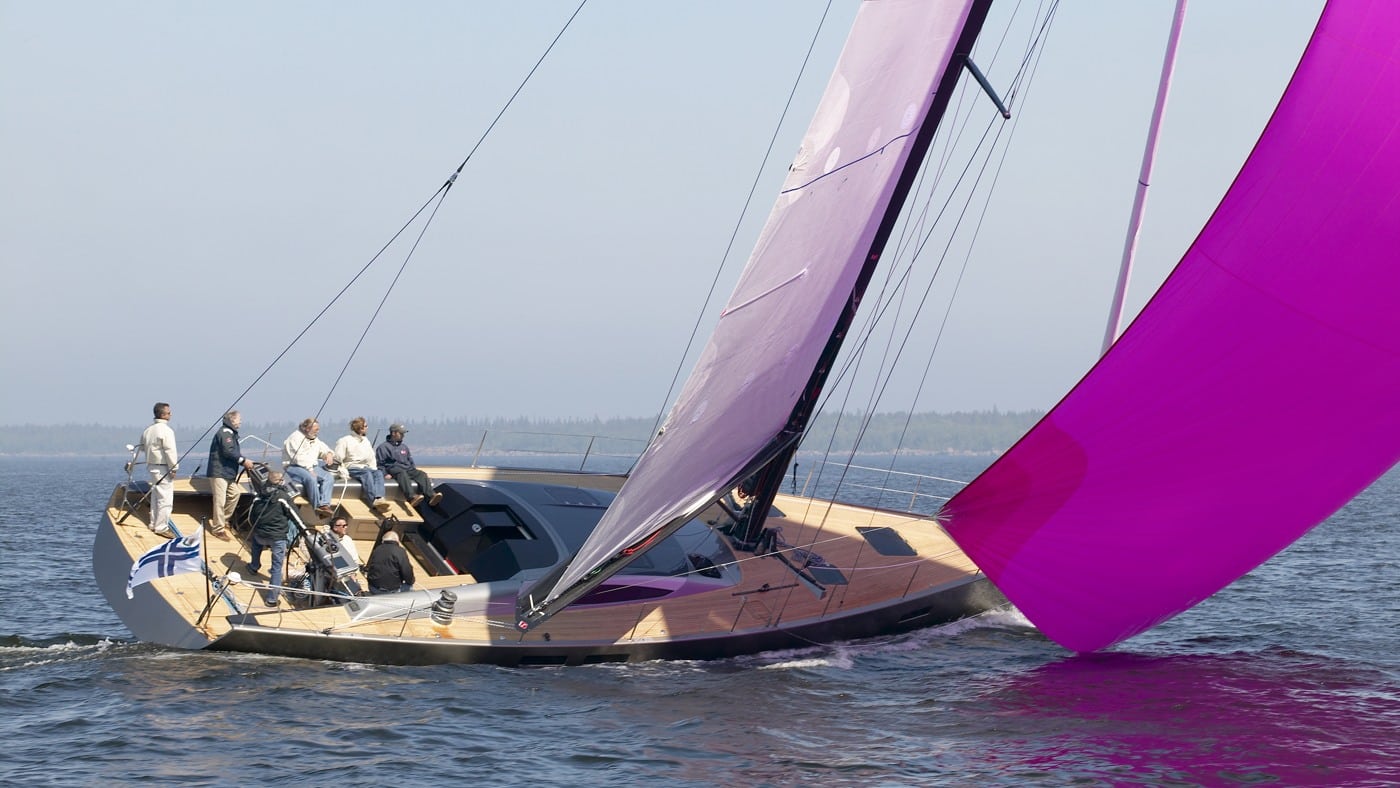
TELL TALES: NEXT STEP IN THE PINK GIN SAGA
28 July 2022
In one of my earlier Tell Tales I covered the first Pink Gin we were involved in creating. This was the 97 FT Yacht we produced and delivered in spring 1999 and as a spin-off we delivered a Baltic 40 as an interim boat to the same client.
The 97-Footers home port was in the Mediterranean, south of France but the yacht was used a lot and sailed around the World, visiting many nice places. One of the many places Pink Gin visited was New Zealand for the 2003 Millennium Cup and also as spectator for the Alinghi Americas Cup victory the same year. Rolf Vrolijk, the naval architect of Ping Gin also happened to be the naval Architect for the Alinghi AC winner. Hanging on a wall in my house is a very nice blown-up framed photo, that the owner gave me, of Pink Gin in full power under spinnaker. A nice and impressive yacht with a very positive and representative crew resulting in, valuable international exposure for us.
Sometimes around 2003 – 2004 the Pink Gin owner started to talk about eventually developing a new larger Pink Gin. We did some studies, proposals, calculations based on the owners’ ideas. Judel/Vrolijk and especially Rolf Vrolijk played a key role in the new project’s development. After a few discussions and proposals, a contract for the new 152-Footer Pink Gin was agreed upon and signed.
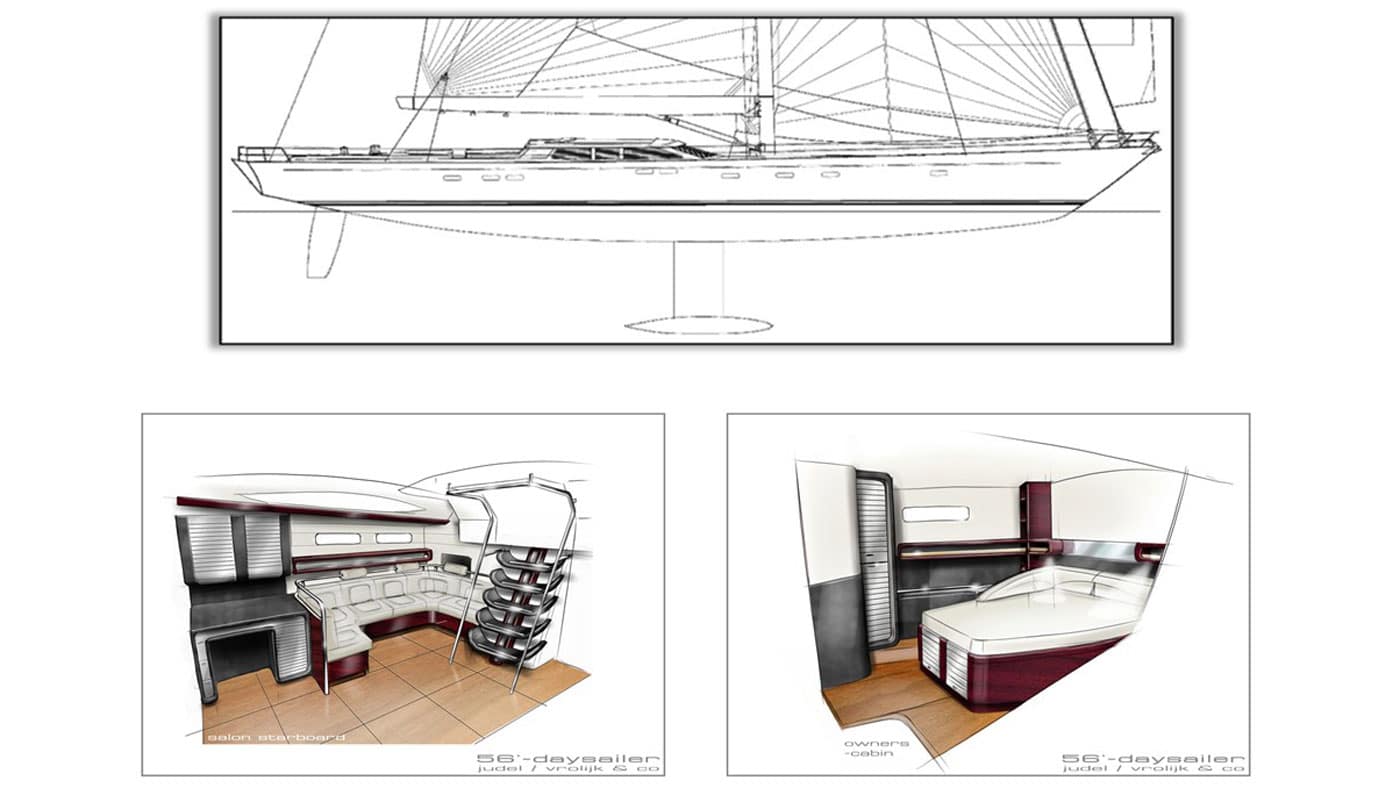
Above: Baltic 152 Pink Gin
Below: Shows some of the Baltic 56 preliminary 3D rendering proposals made by J/V
However, this story is not going to be about the 152 FT Pink Gin but about a slightly different and substantially smaller yacht.
During the owners first visit to inspect and see the 152 being built and going through a number of details and decisions the same procedure took place as when the 97 Pink Gin was built. Since the new Pink Gin was not to be delivered for the next season, he would be interested in an interim yacht. At that point we were in the starting position for a new serial model, Baltic 56.
The Pink Gin owner signed a contract for the first Baltic 56 as his interim yacht.
As it turned out the first Baltic 56 became so much personalized and customized, differing substantially in layout, equipment and concept from the future Baltic 56:s that the only thing it had in common with the standard model was the hull.
The Naval Architect, Judel/Vrolijk made several studies and proposals based on discussions with the client and came up with some very personalized layouts and styling.
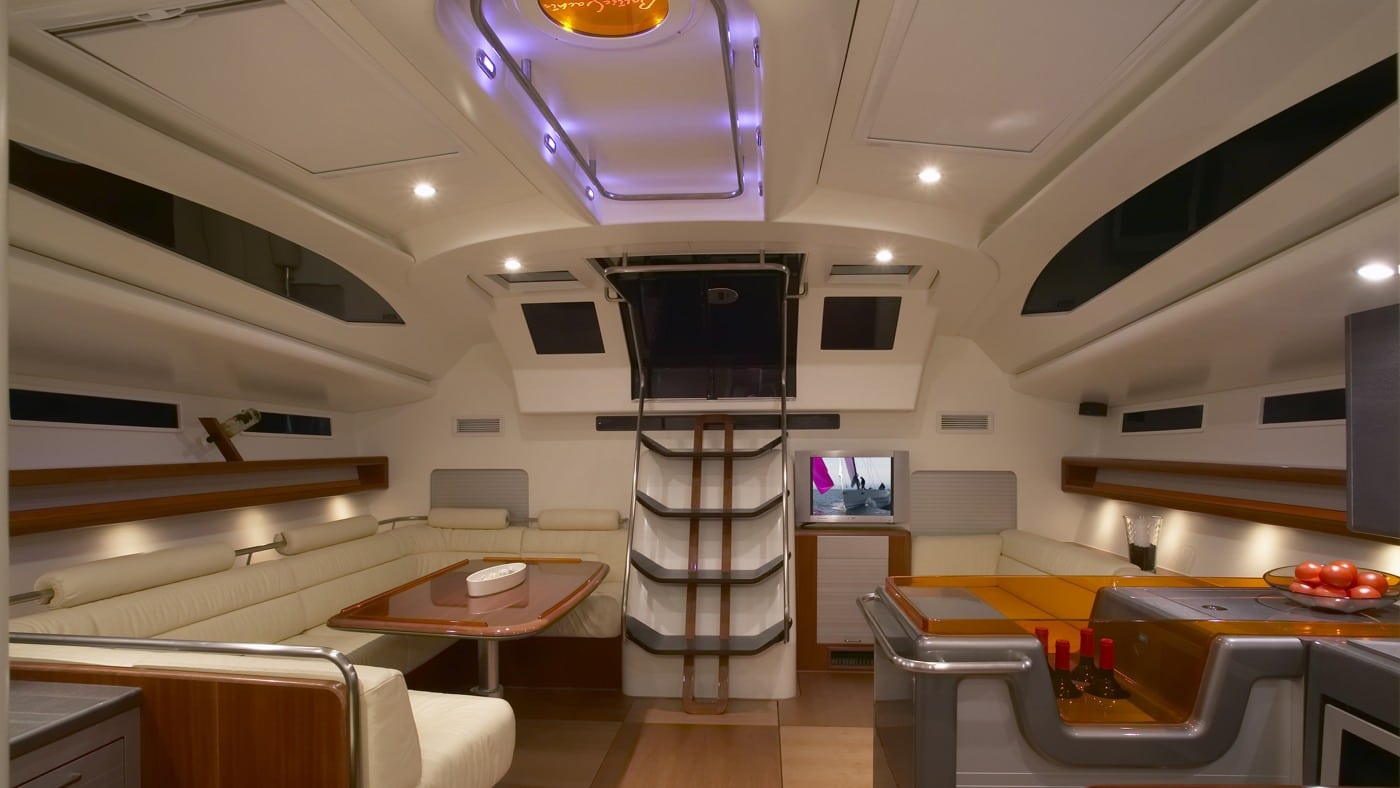
Final saloon, looking aft

Galley, as built
Not only was the interior styling and material used very special and personalized but so was also the deck styling and concept.

The Pink Gin projects was aimed at high performance cruising with probably comfort as the main priority. This project however was aimed more toward the performance side.
Dealing with a client that has very personal ideas and visions and likes new technology, you sometimes, as a builder, ends up with quite a challenge. To say the least, that’s what happened also this time.
In addition to a new, modern, styling the project suddenly ended up as a “canting keel” project.


In other words, a very extreme and performance-oriented project.
Having a project like this, as the first, in a serial production series may perhaps not sound as the optimum and would not even be possible for a “real” serial production yard.
We had from the beginning a set-up where we could take on relative high level of customization and at this time our flexibility and capacity of handling customized projects were very good hence possible to do a project like this as the first in a series.

Full Carbon Epoxy hull being vacuum infused.

Completed hull laminate.

Deck outer Pre-Preg Carbon skins finished, Nomex honeycomb sandwich applied and inner Pre-Preg skin under work.
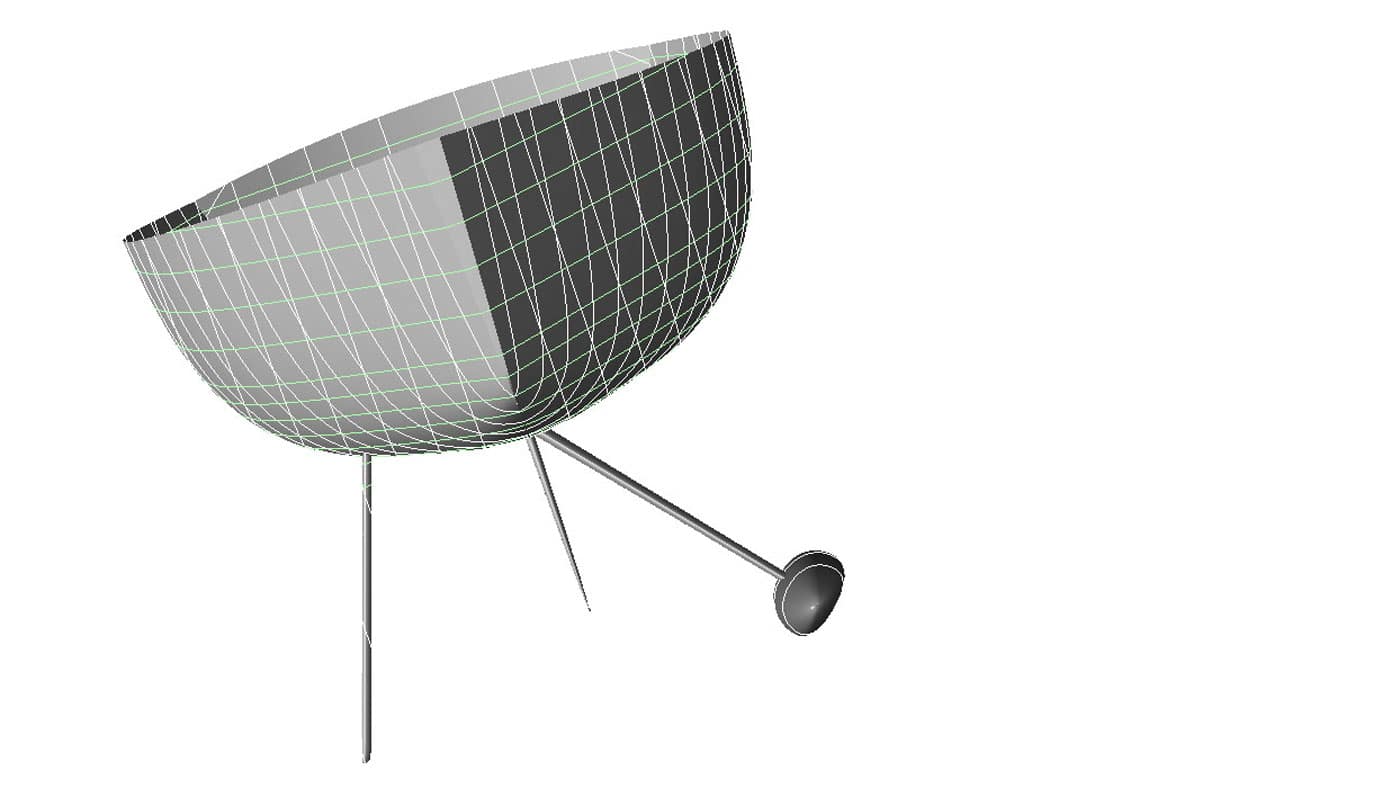
Rendering with keel canted 40 degrees and SB daggerboard down.
Those days one of the most effective ways to boost performance was using a canting keel system in combination with two asymmetric daggerboards. We knew from the experience we had with a previous canting keel yacht, the Custom Baltic 78, that this really created a substantial performance increase.
In a cruising situation the canting system advantage is less heel and reefing at slightly higher wind. A lot of power without 15 men sitting on the rail.
Like with many other things in life, the canting keel system have some negative sides. Apart from the cost increase the system is fairly sophisticated with, among others, a complex, powerful hydraulic system. The technical complexity will naturally require some maintenance and looking after. Also sailing a canting keel yacht requires a little more skill from the crew. But all in all, it makes a trilling sailing yacht.
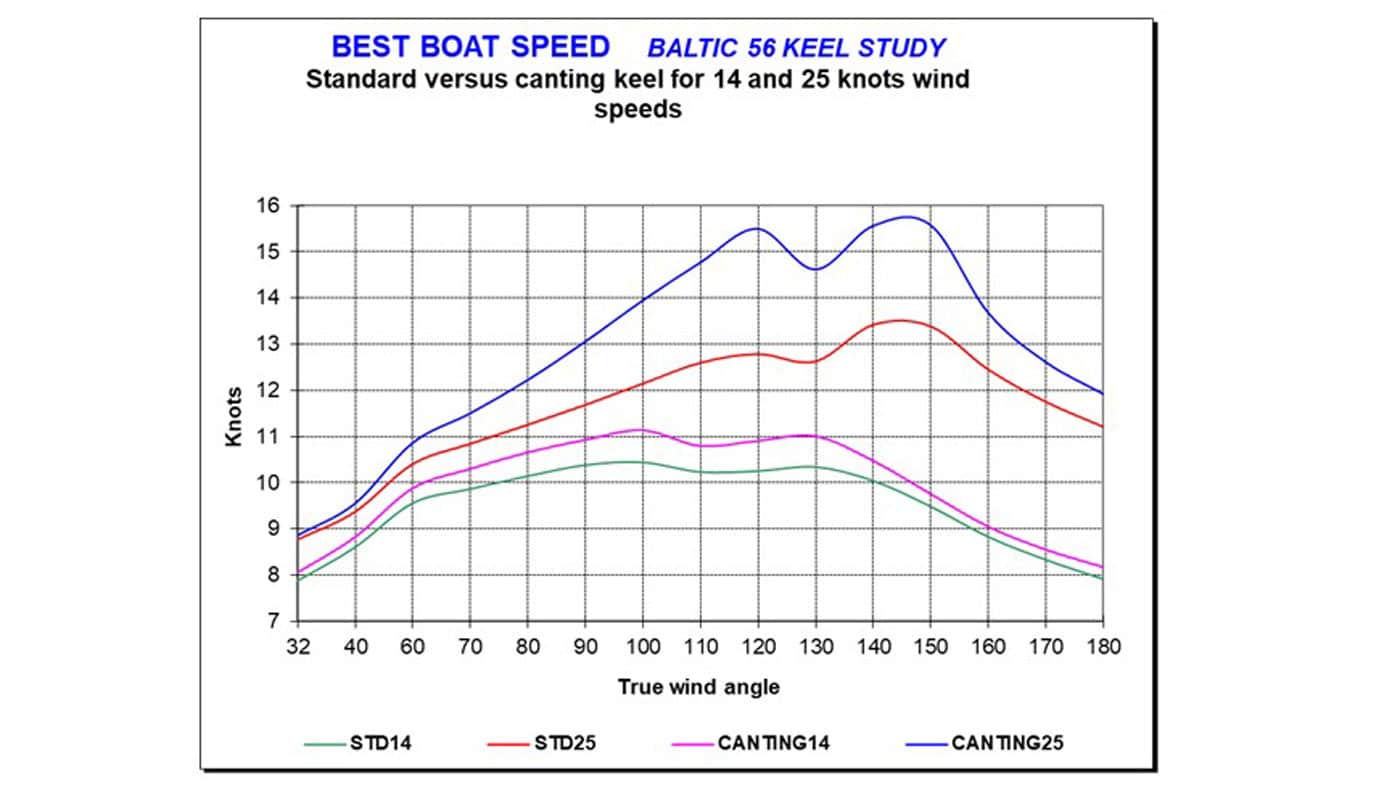
The yacht was launched in Jakobstad prior to being shipped to the Mediterranean waters so we had a few days of test sailing and tuning.
A very special project like this with a very personalized design and concept require a good team to accomplish. The very special style of the interior and use of “nontraditional” materials requires high skill from the interior manufacturing staff. The canting keel represents a high technical complexity by itself but put also pressure on the rest of the yacht being built light emphasizing a high technical level of materials and methods used. The team did a good job but had good assistance form subcontractors, laminate designers, hydraulic specialists etc.
The Naval architecture and outside-inside styling was dome by Judel/Vrolijk so in all honesty they contributed a great deal to this project, Rolf Vrolijk personally was playing a central role in the project’s development.
But like I always say: without a very good and inspiring client with very special ideas and visions, there is no challenges and no project.

A very special and memorable project that once again makes me realize that I have hade the fortune to work with some of the best.
TELL TALES

PG JOHANSSON
There can be few yacht builders like PG Johansson, who can boast an unbroken career with the company he co-founded almost 50 years ago. In that time PG Johansson has witnessed every twist and turn of a colourful, exciting and technically pioneering industry accumulating a wealth of fascinating stories, some familiar, some still untold. In this blog PG will be recalling his experiences of the yachts he has built, the people he has met and some of the more unusual events on the journey to turning clients’ dreams into reality.
Would you like to comment on this post or share your own Baltic story? Join our ‘Baltic Yachts Tell Tales’ facebook group exclusive to the Baltic Family.


